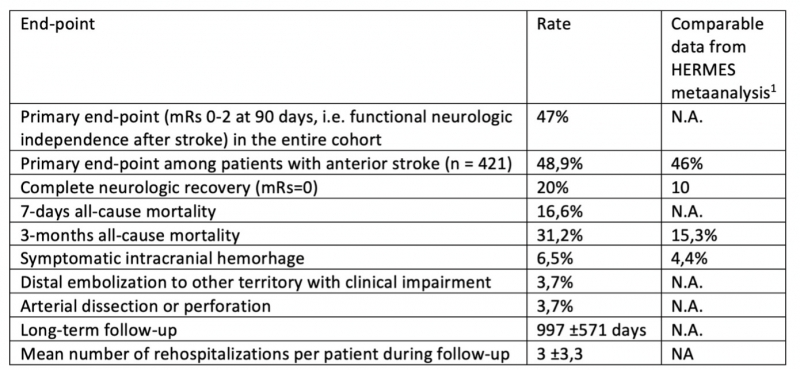CATHETER THROMBECTOMY FOR ACUTE ISCHEMIC STROKE IN CARDIOLOGY CATH LAB: 10 YEARS RESULTS
Background and aim Acute ischemic stroke is a devastating disease with high mortality and frequent permanent severe functional disability. Catheter thrombectomy is traditionally performed in neuroradiology centers, however, they are not widely available and thus unable to meet the population needs. This study investigated whether this gap can be filled by involving interventional cardiologists.
Methods Study was initiated in 2012 as a prospective single arm study testing these questions: Whether catheter thrombectomy can be performed safely and effectively in cardiology Cath Lab and achieve results comparable to neuroradiology centers, whether direct thrombectomy can be an alternative to bridging thrombolysis followed by thrombectomy. Additional question was added to the protocol in 2018: What are the outcomes of patients in whom thrombectomy is done between 6-24 hours after stroke onset.
Inclusion criteria: NIHSS ≥6, <6 (24)h from symtoms onset.
Exclusion criteria: inability to start intervention within 60 minutes after hospital arrival, intracranial bleeding, any chronic severe disease limiting prognosis.
Results Between October 2012 and May 2022, a total of 507 patients with moderate-to-severe acute ischemic stroke were enrolled. Table (fig. 1) contains main results. Other observations included: short learning curve for experienced interventional cardiologists, worse outcomes of posterior circulation strokes, high number of rehospitalizations (most related to concomitant diseases, not to the treated stroke).
Conclusion Catheter thrombectomy in cardiology Cath Lab is feasible and safe and may achieve results similar to those of neuroradiology centers. Direct thrombectomy offers results comparable to bridging thrombolysis followed by thrombectomy. Cardiologists should be involved in stroke teams to provide treatment to broad patient populations.


